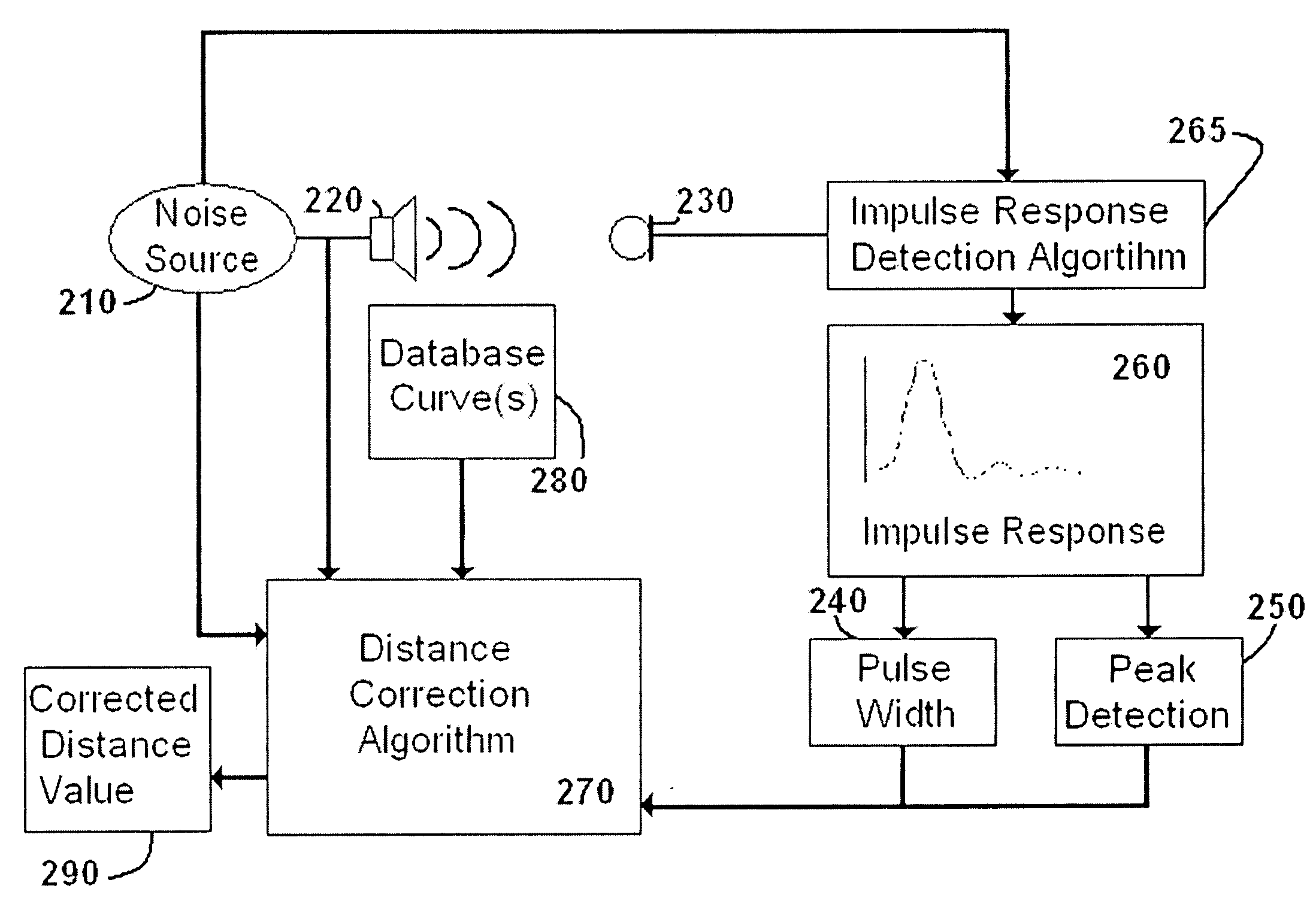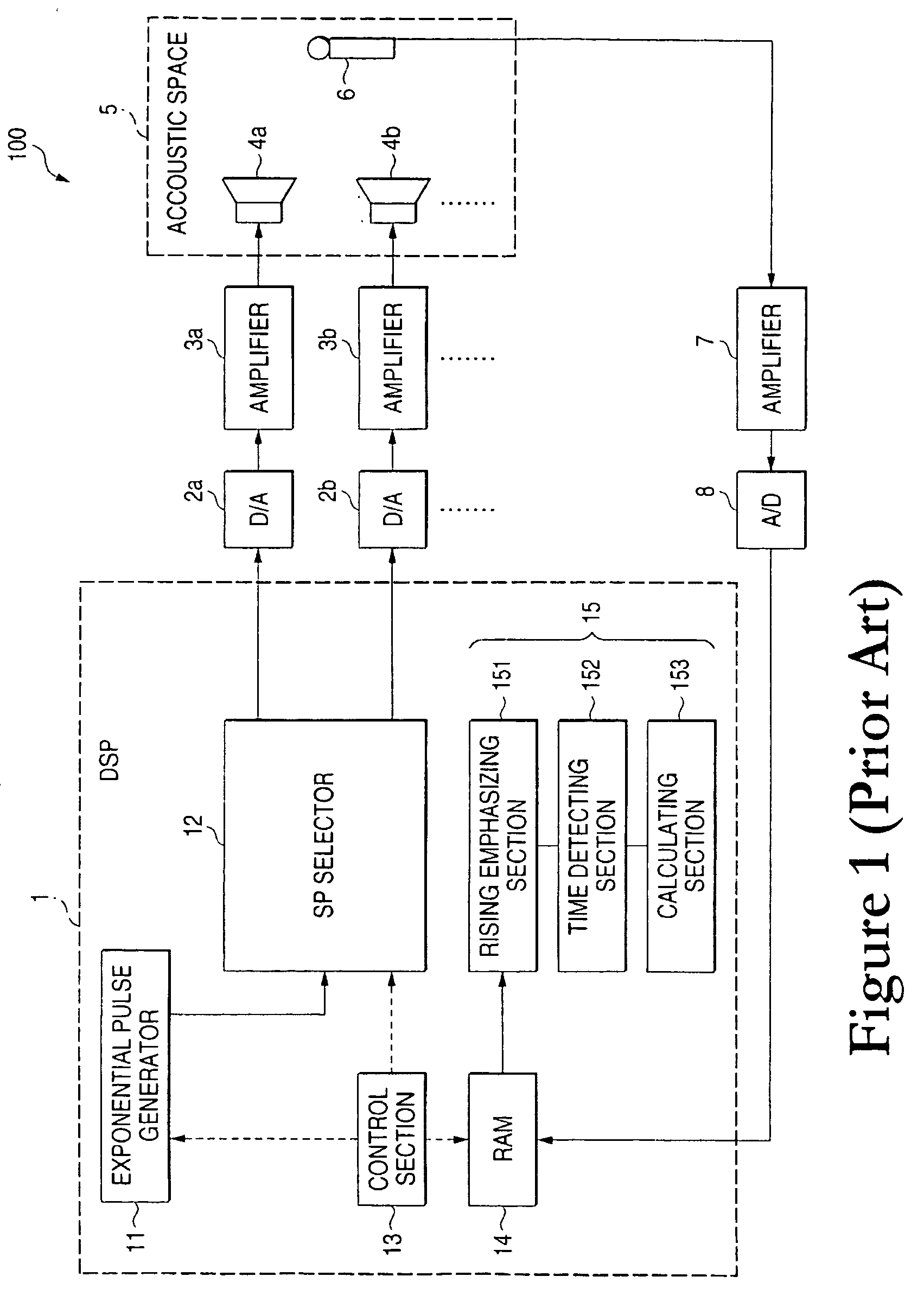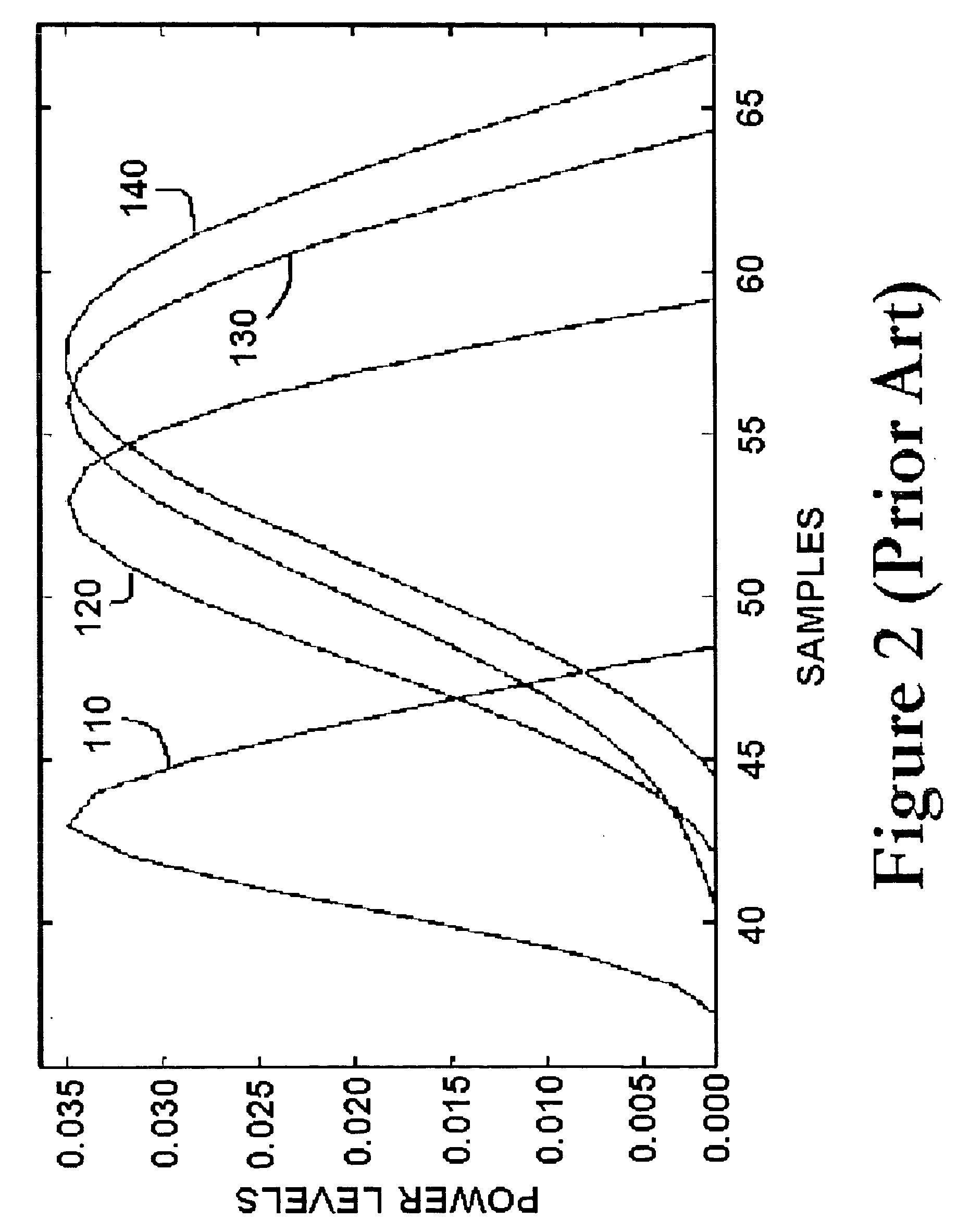Technique for subwoofer distance measurement
a technology of distance measurement and subwoofer, which is applied in the direction of measurement devices, instruments, computing, etc., can solve the problems of not always accurately reflecting the peak of the impulse response, the outside control of the manufacturer, and the inability to fine tune the home theater system. , to achieve the effect of increasing the width of the impulse and greatly increasing the accuracy of the computed distan
- Summary
- Abstract
- Description
- Claims
- Application Information
AI Technical Summary
Benefits of technology
Problems solved by technology
Method used
Image
Examples
Embodiment Construction
[0023]FIG. 3 is a block diagram of the apparatus of the present invention. For the sake of simplicity, many of the basic components in an auto-setup home theater system are not illustrated here for the sake of clarity. Referring to FIG. 3, a noise source 210 may be used to generate a sound pattern or series of impulses or the like through speaker 220. The actual sound used may encompass any of the known sound patterns known in the art for measuring speaker location and the like. Speaker 220 represents the system subwoofer or other speaker, which may be measured for the present test and calibration cycle.
[0024] Microphone 230 may be located by the consumer at a preferred listening location (e.g., near the head of the consumer at a favorite chair or the like). Microphone 230 picks up noise or other sound from speaker 220, which will be delayed by an amount of time equal to the speed of sound divided by the distance between microphone 230 and speaker 220. Other internal delays may, of...
PUM
 Login to View More
Login to View More Abstract
Description
Claims
Application Information
 Login to View More
Login to View More - R&D
- Intellectual Property
- Life Sciences
- Materials
- Tech Scout
- Unparalleled Data Quality
- Higher Quality Content
- 60% Fewer Hallucinations
Browse by: Latest US Patents, China's latest patents, Technical Efficacy Thesaurus, Application Domain, Technology Topic, Popular Technical Reports.
© 2025 PatSnap. All rights reserved.Legal|Privacy policy|Modern Slavery Act Transparency Statement|Sitemap|About US| Contact US: help@patsnap.com



